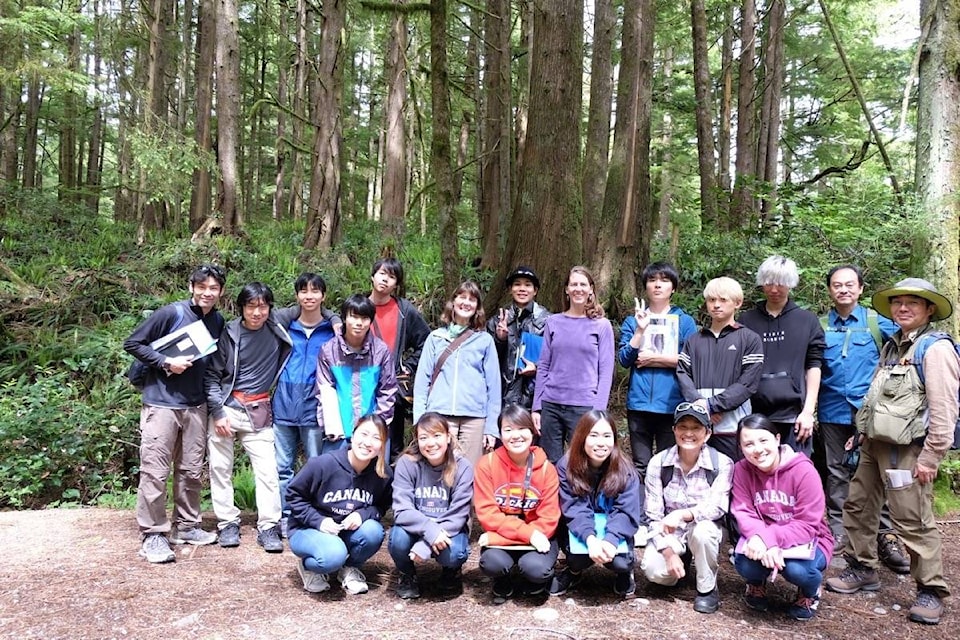A group of Agricultural students from Tamagawa University in Japan were on the Coast from June 14-16 to learn about local trees and forestry practices.
Their unique itinerary included a forest management workshop with Dr. Barb Beasley, a forest restoration workshop with Central Westcoast Forest Society, and a cultural themed session with Ahousaht First Nation Elder Moy Sutherland.
The customized trip was organized by the West Coast NEST, a hub for connecting organizations and businesses to educational experiences on the Vancouver Island’s Pacific Rim.
READ: Tofino and Ucluelet students plant over 1,000 trees
NEST educational coordinator Nicole Gerbrandt opened the educational visit up with a brief orientation session before sending the foreign students out to the trail to learn about cedars and shrubbery with Prof. Beasley.
“Meeting with the group upon arrival to the West Coast provided a nice welcome for them, and gave them a sense of personal connection, opportunity to learn more about the services available, and to ask any questions they had,” said Gerbrandt.
Michiko Nakatani is the program manager for Tamagawa University at their satellite office in Nanaimo. She said the students are on exchange for four months, studying horticulture and ESL at Vancouver Island University.
“These students are all interested in ecology and B.C. plants and trees. So, we said, ‘Maybe we need to learn the First Nations idea toward forests rather than only what we have studied in Japan,’” said Nakatani.
“We can read about Western peoples’ idea toward forests, but we can’t find so many papers or books on how First Nations people take a look.”
Mio Yoshida, 19, only speaks basic English, yet she was able to convey her joy about learning how First Nations worked with trees.
“First time I hear Western red cedar First Nation people,” said Yoshida. “I’m interested in Western red cedar. I live in Tokyo so Tokyo has little nature. Not many nature. Very different. Tokyo has many, many building. Not enough trees and nature.”
Gerbrandt is looking forward to collaborating with Nakatani to create more customized educational trips for Tamagawa students.
“We will work together again, as they will be back with another cohort of students in October of this year. A professor from the Centre of Tamagawa Adventure Program joined in this tour and we are going to be in touch regarding future trips for his department also,” said Gerbrandt.
She notes that the NEST is able to connect groups to over 30 organizations and businesses in the region with educational programming.
“Additionally, the NEST provides a platform to connect with local knowledge holders that are not currently affiliated with a larger organization or business. For example, Nuu-chah-nulth First Nation Rose Wilson enjoys teaching [cedar] weaving, so we created a listing for her workshops and advertise it through word of mouth and social media.”
Anyone looking for more information on the West Coast NEST is encouraged to visit: www.westcoastnest.org.
READ: Clayoquot Biosphere Trust helping West Coast communities thrive
